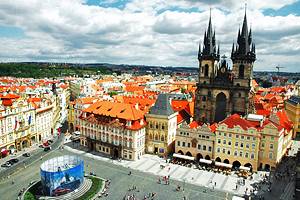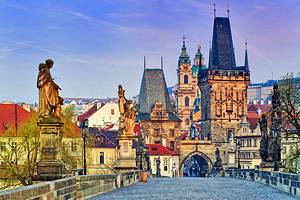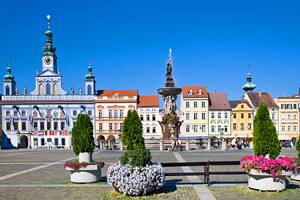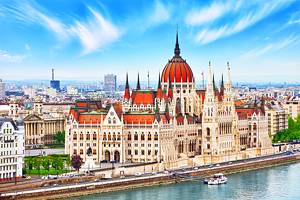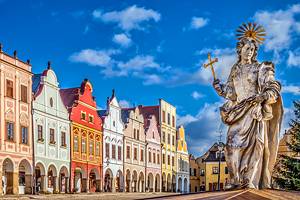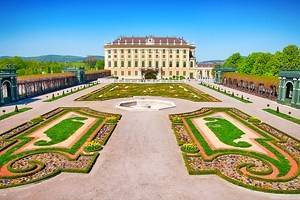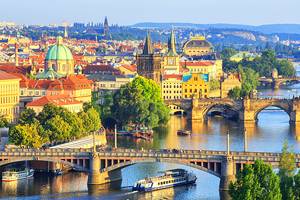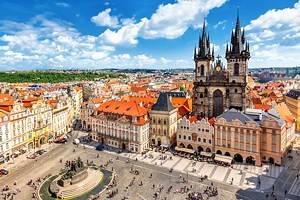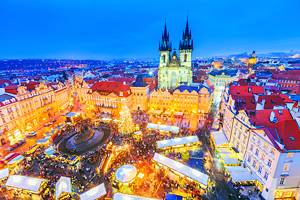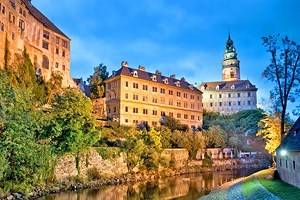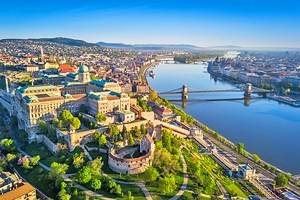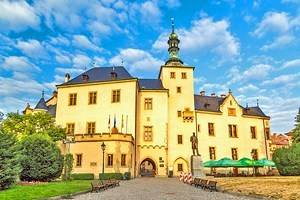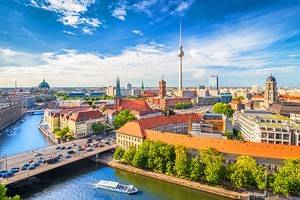Cheapest European Countries to Visit
Europe offers plenty of destinations for all tastes and interests but countries such as France, Germany, and the Netherlands can also stretch your budget to the max. If you're looking for the cheapest European countries to visit, you'll have to think outside the box and head to lesser-known (but equally magical) destinations.
Destinations in Eastern Europe offer some of the best value for travelers heading to Europe. If you want to visit some of the popular Western European countries, timing your trip to avoid the high season is another good way to cut costs.
Choose the best places to visit from our list of the most affordable European countries.
Bulgaria
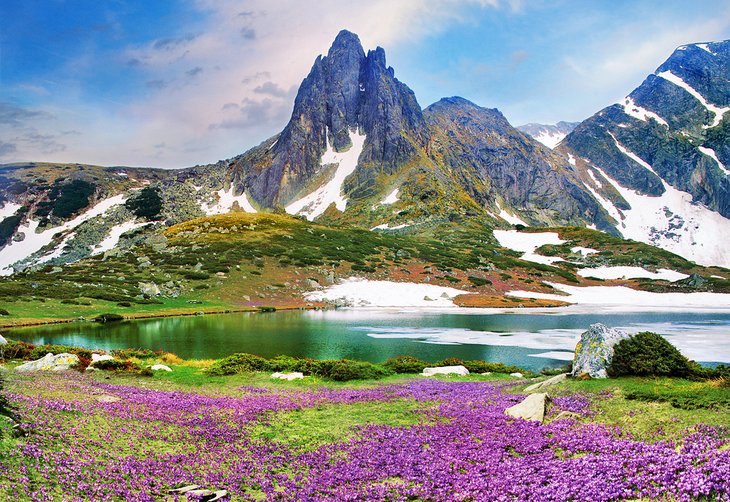
Bulgaria often tops the list of inexpensive countries to visit in Europe – and with good reason. For starters, Bulgaria remains largely undiscovered by tourists except for the visitors that come over in summer for a cheap vacation alongside the Black Sea. Even then, accommodations, flights, and entertainment will still cost you a fraction of what you would pay in Western Europe. In the off-season, prices drop considerably, and you can ski, eat, and travel around the country for a tenth of what it costs in the West.
One of the best parts of visiting Bulgaria is the countryside, where castles, villages, and hiking trails – the Central Balkan National Park tops the list for great hikes and breathtaking views – are either free or very cheap to visit. While Sofia is the first stop for many visitors, smaller cities such as Plovdiv – home to over 200 archaeological sites – are even cheaper to explore.
Hotels in Bulgaria are particularly cheap outside of the summer months, and many include not only free breakfast but also free shuttles.
Romania
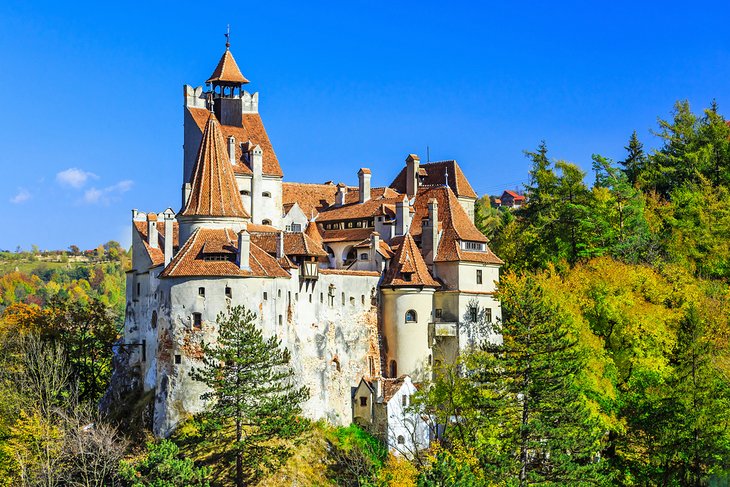
Romania is one of the cheapest destinations in Europe, especially if you're heading to the Carpathian mountains for some hiking or mainly focused on exploring the countryside. Even a visit to Brasov – home to Dracula's 14th-century Bran Castle – can be very affordable if you book a sightseeing day tour or don't mind slow train connections out of Bucharest. Trains aren't always in the best condition in Romania, but they are safe and very cheap.
Some of the most beautiful structures in Bucharest – including the 15th-century Old Town, Revolution Square, and Romania's own Arch of Triumph – are either free or very cheap to visit. In warmer weather, renting a bike can be a great way to explore smaller cities, or you can join one of the many free walking tours that depart from the center of town.
In most cases, it doesn't pay to shop at supermarkets here, as eating out is cheap in Romania, and the meals are hearty and filling. Local specialties such as sarmale (cabbage rolls), cozonac (sweet bread), or mamaliga (polenta, usually served with sour cream and strong cheese) are cheap, often sold at street food stalls, and a great way to get a quick intro to Romanian food.
Montenegro
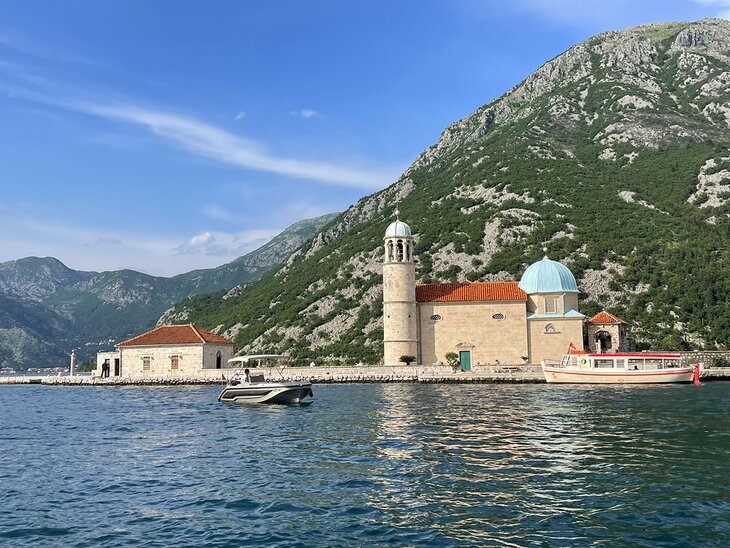
Montenegro is one of Europe's newest countries. It regained independence in 2006 and while it's rising in popularity as a tourist destination, today many North Americans still have a tough time finding it on a map.
Its "rising tourist destination" status means many things for travelers — fewer crowds and, of course, lower prices. The country has a little bit of everything to offer travelers: beautiful beaches, UNESCO medieval towns, national parks, lakes, mountains, and more — all for a fraction of the price of other more well-traveled European destinations.
Visitors to Montenegro can expect cheap food, particularly if you stick to the local fare, like meat-stuffed burek, homemade cheese and cured meats, and seafood. Of course, you can find a lot of Italian cuisine in Montenegro, too, like pizza, pasta, and salads, which are also very inexpensive. Grocery stores are cheap, as well, so if you book a place with a kitchen, you can stock up and cook your own meals.
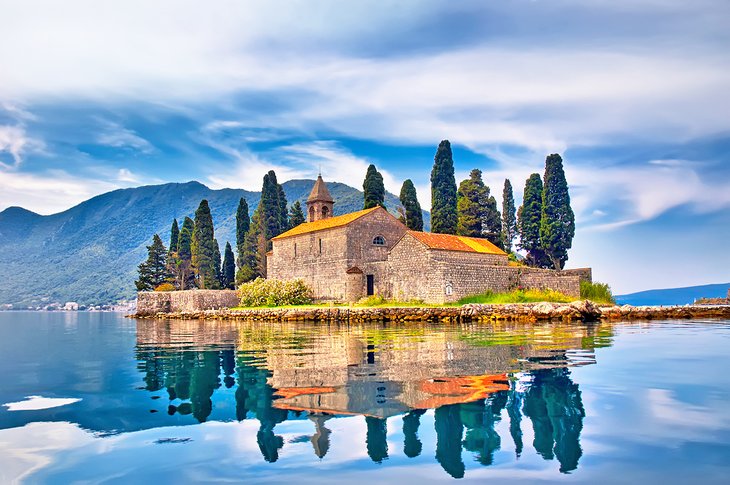
One thing to note is that July and August are the busiest months in Montenegro. You'll find a high volume of tourists, particularly along the coastal areas here, like the hip beach city Budva or Herceg Novi on the Bay of Kotor.
But fear not — if you're visiting in the summer months you can always head inland to explore the rugged mountains, glacial lakes, and UNESCO medieval towns. For example, Crno Jezero, a mountain lake surrounded by deep green-bluish forest, is a stunning destination for hiking and swimming and is completely free to enjoy.
Ada Bojana, a small island away from the pricey shoreline towns, is a prime destination for kitesurfing and a lovely summer destination with very affordable prices.
Accommodation: Beach Resorts in Montenegro
- Read More: Things to Do in Montenegro
Portugal
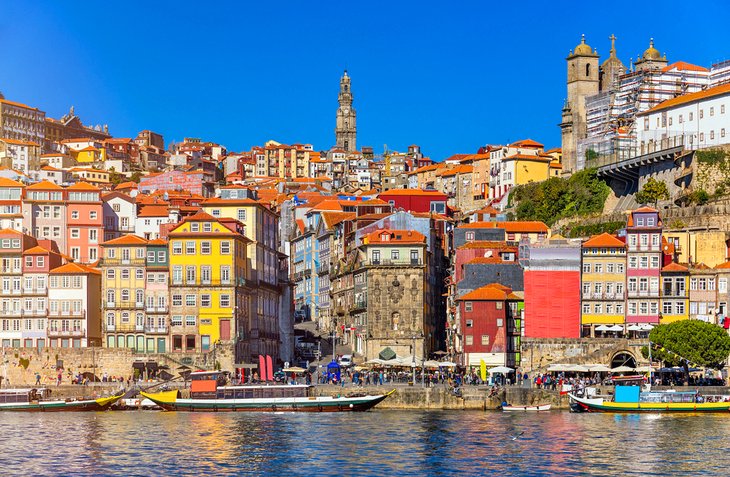
Portugal's most attractive destinations are all about nature, sun, and the outdoors – meaning they're mostly free. The Faro District in the south of the country is a popular destination for its soft golden sands, cliffs, and lighthouses, while visitors to Madeira head there for the rugged volcanic hiking trails, the beautiful harbor, and the great scuba diving.
The biggest expenses on a trip to Portugal will be food and accommodations, though visiting outside peak season (June to August) will reduce costs considerably. From November to February, prices drop even more, but the temperatures remain around 17 to 18 degrees Celsius, so it's the perfect time to visit to score great bargains.
Some of Portugal's most interesting destinations are free to explore – aside from the cost of the transportation to get you there. These include the ancient town of Evora, a World Heritage site, and the 12th-century Templar Castle and Convent of Christ in the town of Tomar.
Slovenia

A tiny country surrounded by giants – Italy, Austria, and Hungary are against its borders – Slovenia is a mountainous country covered in forest. Still, most visitors arrive here for the shoreline – sitting against the Adriatic Sea, Slovenia offers plenty of affordable sandy beaches and lots of sun.
While the summer season means more expensive accommodations along the coast, the beaches are all public and free, so it's possible to keep the costs to a minimum even during the high season. Koper Beach and nearby Mestna Beach, Moon Bay, and the famous seaside resort of Portoroz are all very affordable in late spring when temperatures are already summery, but the tourists haven't arrived yet.
Away from the coast, Lake Bled is perhaps the best-known destination. Located just 35 kilometers from the capital city, Ljubljana, the lake is an affordable destination and one of the most stunning sights in the country. Other budget destinations include the medieval town Piran; the fortified village of Štanjel; and Triglav National Park, where you can hike to the top of Mount Triglav in two days with an overnight at a mountain hut.
Hungary
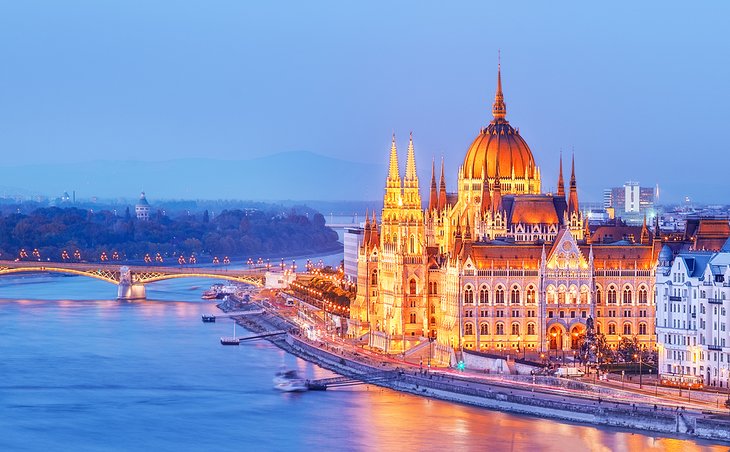
Hungary is one of the most expensive countries in Eastern Europe – but still a fraction of the cost of traveling to major destinations in the Western half of the continent.
Hungary's capital, Budapest, is home to a long list of free attractions, including walking on the Chain Bridge across the Danube and exploring the Castle Hill area. Although some of the attractions in the Castle area – which includes the Buda Castle and the underground Castle Labyrinth – aren't free to visit, they're still very affordable. In the month of June, the city sponsors a "Night of the Museums," where you can visit many landmarks around Budapest for free.
The neo-Gothic Great Market Hall, Budapest's oldest indoor market, is a great place to search for budget souvenirs and cheap snacks, including many traditional Hungarian foods. Street food is another great way to save money when visiting – the country's favorite fast food is lángos, a sort of deep-fried pizza topped with cheese, tomato sauce, or sour cream.
Outside the capital, things get considerably cheaper. Visitors to the lake resort town of Tihany and those heading to Bükk Mountains for outdoor adventure will find that prices are even lower there all year long.
- Read More: Tourist Attractions in Hungary
Slovakia
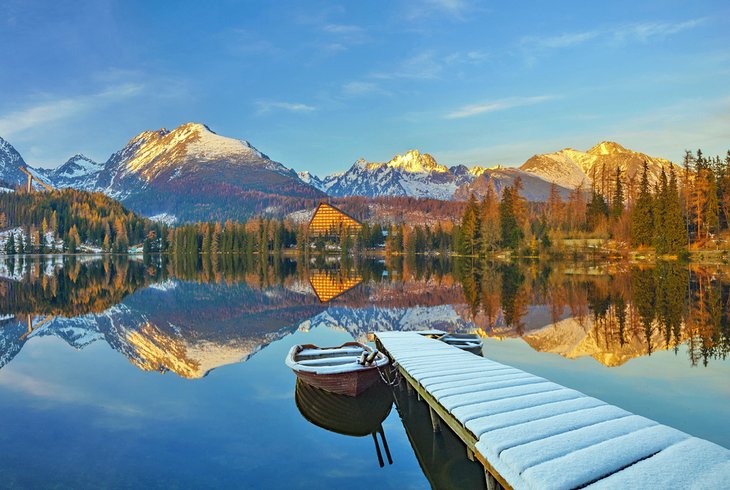
As Slovakia's capital, Bratislava is definitely the most expensive destination in the country – but even here, you can keep your trip cheap by taking advantage of the many free things the city has to offer.
In addition to many tiny galleries spread throughout the entire city, Bratislava is also home to lots of street sculptures – from bronze workmen coming out of sewer holes to life-size Napoleon's soldiers leaning against benches. Despite being the capital, Bratislava is relatively small and can be easily explored on foot, as most of the attractions and top things to do are located around the Old Town center area – if you're headed outside the city, trains and buses are cheap and very comfortable.
If you're looking for outdoor adventure, however, Slovakia offers plenty of things to do – and most of them are free. The High Tatras, Slovakia's tallest mountains and a massive national park, has hundreds of kilometers of hiking trails. Between June and October, the trails are perfect for hiking and exploring. In winter, many of them become great destinations for snowshoeing, as well as downhill and cross-country skiing. All national parks are free in Slovakia.
Slovakia is also home to many UNESCO World Heritage Sites, castles, memorials, and monuments – all free or very cheap to discover.
Poland

Poland's main cities – Krakow and Warsaw – are not always cheap, so if they are your main destinations, avoid visiting in the summer. Shoulder season (especially the months of March and April) are ideal months to travel to urban Poland – the weather is warming up, the prices are still low, and the castles and palaces that were closed during the winter are opening up again, often at discounted prices.
Poland's most famous destinations – including the Auschwitz-Birkenau camps, the Wieliczka Salt Mine, and Schindler's factory – are much less crowded in the off-season, so you won't waste time waiting in line. Many other attractions around the country are either very cheap or free to access, including climbing the Old Town Hall tower for great views in Krakow, the 13th-century Castle of the Teutonic Order in Malbork, and the ancient Bialowieza Forest.
In the larger cities, museums often offer one free day a week – for example, the Royal Castle in Warsaw is free to enter on Wednesdays, while the Chopin Museum is free on Sundays.
While trains aren't always very cheap in Poland, you can get almost anywhere via bus for very little money. Long-distance buses such as Flixbus are comfortable, offer free Wi-Fi, and will get you to even the tiniest towns in Poland.
Czech Republic
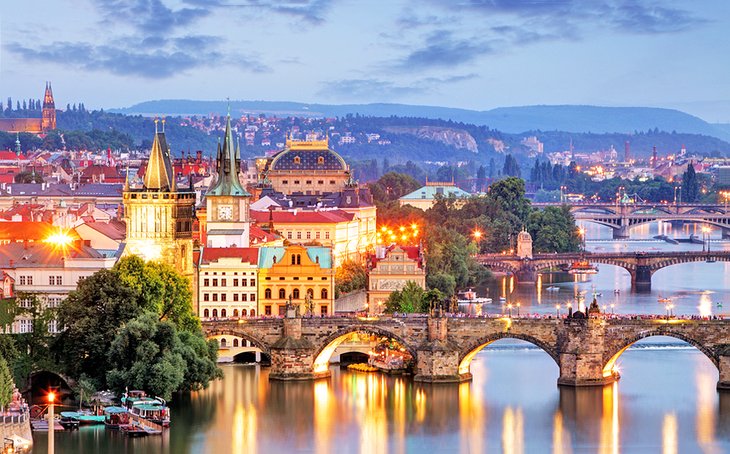
The Czech Republic is not as affordable as it used to be, but if much of your travel is outside the capital city of Prague, you'll be able to find plenty of bargains. This is especially true during the colder months (except for the second half of December, as the weeks around Christmastime are prime tourist season). January and February are the cheapest months, with March through May also offering some great discounts on flights and accommodations.
Many of Prague's main attractions are free but also part of many paid tours – rather than paying to be taken there, it makes more sense to grab a map and explore them on your own. This includes walking on Charles Bridge, stopping by the Astronomical Clock, and walking the cobblestone streets of Old Town Square and its medieval buildings.
Things get much cheaper at other major destinations around the country – including the fairy-tale town of Cesky Krumlov, the unusual town of Sedlec and its ossuary chapel, and the never-ending trails and mountains in Bohemian Switzerland National Park. Even during high season, the hotels at these destinations will be affordable if you book enough in advance.
Albania
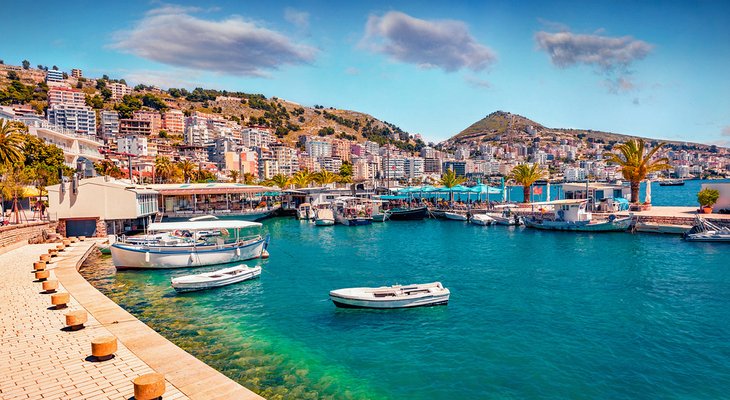
Albania remains one of Europe's best-kept secrets. In addition to plenty of historical sights, amazing nature, and great summer weather, Albania also offers a long coastline – known as the Albanian Riviera – of pristine beaches and turquoise waters without the sticker-shock prices of other European destinations. Even the more famous beach destinations, such as Dhërmi and Ksamil, see moderate international tourism and offer very affordable accommodations and restaurants all year long.
To save even more, avoid the summer months if you're heading to the coast, and instead book your holiday for April, May, and early June (except for Easter week, when prices go up). It'll still be warm enough to enjoy the beach, but you'll enjoy special discounts, and avoid the crowds. If you're coming over for hiking or exploring the cities on foot, late September and October are good options.
While the winter months will offer bigger discounts for city stays (and yes, this includes the capital, Tirana, a great starting point for exploring the country), the mountains are too cold for casual outdoor adventures starting in November.
Sit-down restaurants are very affordable in Albania, but cafés and casual eateries even more so. Local bakeries are another great option to save money, as you can pick up a number of local pastries – including the traditional spinach-and-cheese-filled Byrek – for pennies to carry as snacks for the day.
Bosnia and Herzegovina
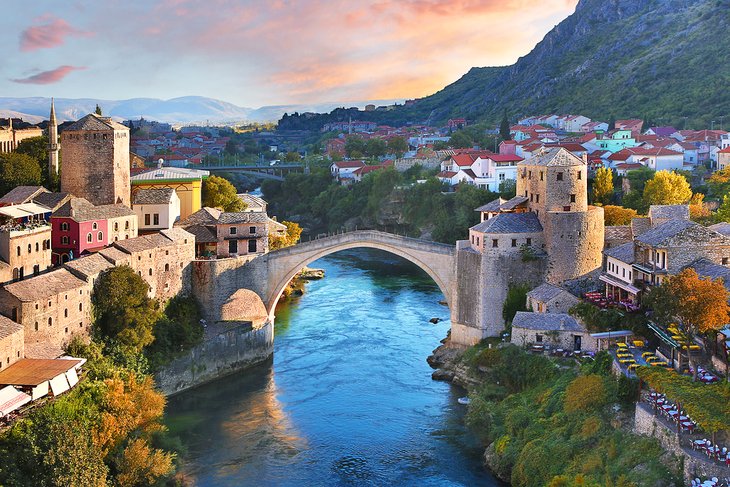
While not the cheapest country on this list, Bosnia-Herzegovina has one big advantage over other destinations: prices for flights and accommodations don't vary much during the year. This means you can visit in summer and enjoy rafting on the Neretva River, or come over during the winter months for some Christmas market shopping and plenty of skiing on a budget.
There are plenty of very affordable ski resorts, such as Jahorina and Babin Do, just a short drive away from the capital city, Sarajevo.
Restaurants aren't particularly expensive here, but sticking to traditional and regional foods will save you even more money, as these can be found in smaller cafés or street stalls. Look for places serving Ćevapi (kebabs), Pljeskavica (grilled patty), and Đuveč (vegetable stew). Bosnia is also famous for its farmers' markets, where it's easy and very cheap to pick up fruits or pastries to snack on the go.
Croatia
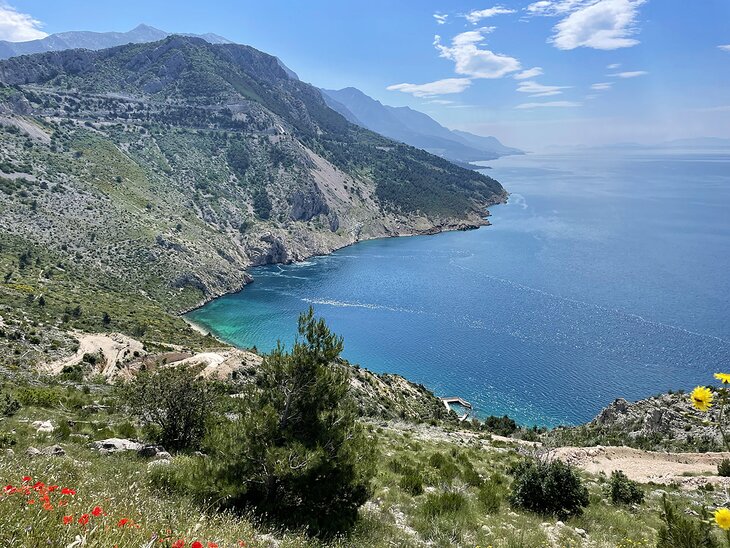
Croatia is definitely a buzzy, must-see destination. Stretched along the northern coast of the Adriatic Sea, Croatia is famous for its spectacular beaches, soaring mountains, medieval villages, and dozens of gorgeous islands.
With so much beauty and so many things to do in Croatia, you would think it would be one of the most expensive countries in Europe. But to many travelers' surprise and delight, it's actually one of the most affordable, depending on where you visit.
Most tourists head to the cities of Dubrovnik and Split — made internationally famous thanks to the filming of HBO's Game of Thrones series. This skyrocketed these medieval cities to worldwide fame, and tourists have started coming by the thousands. As to be expected, the most popular tourist hubs in Dubrovnik and Split can be expensive, but if you venture outside of these epicenters, the price tag gets considerably more affordable.
Zagreb, the country's capital, for example, is a very affordable city with fabulous restaurants, dozens of museums, and a walkable hilltop Old Town. Other medieval towns to consider are Zadar, Trogir, and Sibenik.
Croatia is also home to nearly 10 national parks and even more nature parks to explore. Visit national parks during the low season (January, February, March, November, and December) for the lowest ticket prices (around 10 euros). In high season (June July, August, and September), prices can get as high as 40 euro per person.
Dining in Croatia is very affordable, as well, particularly if you're sticking to local dishes like seafood, local cheeses, meats, and regional delicacies. Italian food is also very affordable in Croatia, as Italy is just across the sea.
Estonia

Over the past decade, Estonia's capital, Tallinn, has become a hub for entrepreneurs and the self-employed, so it's no surprise that prices are higher here than in the rest of the country. Luckily, most visitors to Estonia only stay in the capital for a few days before moving on to explore some of the country's top things to do.
Outside the capital, Estonia offers plenty of low-cost accommodations and cuisine – and this is even true in Tartu, Estonia's second-largest city, where there's a lively art and music scene, including plenty of free festivals throughout the year.
Almost half of Estonia is covered in forests or other natural landscapes, so if you're looking for an outdoor vacation that won't break the bank, it doesn't get much better than this. National parks are free to enter and explore in Estonia. Otepää Nature Park, the country's largest protected area at over 22,000 hectares, offers 65 lakes and plenty of trails (the 14-kilometer-long Lake Pühajärv hiking trail is particularly picturesque).
March to May and September to October are great months to visit, with up to 12 hours of daylight that make it easy to spend time outdoors exploring on foot. Plus, May and September are still warm and pleasant, but prices are much lower than in summer.
Italy
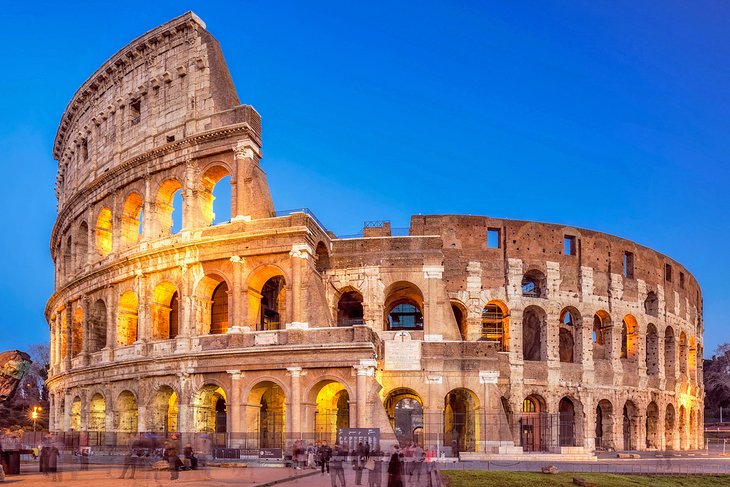
Italy is one of the cheapest Western European countries to visit. This is still a much more costly destination than those found higher on this list, particularly those in Eastern Europe. The rates here can also depend on when you are visiting.
The public transportation system in Italy is so amazing, there's truly no reason to ever grab a taxi while there. That said, if you're trying to cover everything from Milan to Pompeii in one visit, you'll end up spending lots of money on high-speed trains – if at all possible, just pick one region and stick to it, so you can just use local trains and buses to move around.
If you absolutely must see the sights of Rome and Venice on one trip, the local slower trains will take three times longer but cost you a quarter of the price. The same is true when it comes to the country's major tourist sites – the bigger ones, such as the Colosseum or the Vatican, all have significant entry fees, so pick just a few favorites and spend the rest of your trip visiting cheap or free attractions, such as strolling around the Villa Borghese Gardens or tossing a coin into the Trevi Fountain.
The best thing you can do to save money in Italy is to avoid visiting in summer, when everything costs more, the lines for attractions are hours long, and the sticky weather makes it all a little more inconvenient. Even winter is a good time to visit, as most of Italy never gets truly cold – the average temperature in Rome in January is 7 degrees Celsius, but on sunny days it can easily reach 12 degrees Celsius. From November to February, you'll get great deals on accommodations and often cheap flights.
It's almost a crime to visit Italy and not order a big plate of pasta at a trattoria, but the country's local markets are an equally great choice. Spend a couple of hours browsing through the weekend markets to pick up some cheese, fresh bread, and sweets like fette biscottate to create your own snacks or quick lunches. In big cities, you'll also be charged to sit at most cafés and restaurants, so order your coffee to go or drink it standing up – the savings add up if you're a coffee fan.
Map of Cheapest European Countries to Visit
More Related Articles on PlanetWare.com

Extending Your European Vacation: Looking for specific cheap European destinations to discover? Take a look at our list of Cheap Places to Visit in Europe for some inspiration. For warm-weather destinations that match all budgets, see our article on the Places to Visit in Europe in Summer.
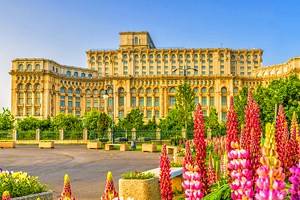
Discovering Eastern European Countries: Castles, mountains, and historical destinations await in Romania – take a look at our article on the Attractions & Things to Do in Bucharest for some inspiration.


